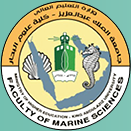Abstract
This study examines the coastal geomorphology of the Ar Rāyis coastal zone on the eastern Red Sea coastal plain, along with the processes underpinning this geomorphology. Coastal areas feature various landforms, including beaches, intertidal flats, khawrs (lagoons), sand spits, sand dunes, sabkhas (salt marshes), coral reefs, wadis, raised coral reef terraces, and alluvial terraces. These landform features suggest rapid alterations in coastal conditions. Furthermore, the analysis of Sentinel-2B data via digital processing reveals a range of natural land covers, with field investigations confirming the results. The supervised classification methods assisted in distinguishing between regions of deep and shallow water, while the coastal areas were identified as comprising sabkhas, vegetation, and reefal limestone that creates reef terraces. This approach was particularly efficient in distinguishing coral reefs (which are generally red) from sand dunes and beaches (which are usually white). Additionally, the supervised classification imaging indicates the presence of wadi drainage and estuary systems in various coastal regions of Ar Rāyis, where several wadis converge, such as Al Mafayttah, Makhshush, Sha’ib Albisah, Sha’ib ad Duqam, and Sarayer. The images illustrate the distribution of different landforms. The results establish a significant basis for forthcoming studies in engineering, geology, and hydrology, in addition to informing governmental decisions.
First Page
100
Last Page
115
Recommended Citation
Alharbi, Omar A.
(2025)
"Identifying and Analysing Coastal Landforms in Ar Rāyis, Saudi Arabia: Insights from Sentinel Data and Field Studies,"
Journal of King Abdulaziz University: Marine Science: Vol. 35:
No.
1, Article 10.
Creative Commons License

This work is licensed under a Creative Commons Attribution 4.0 International License.


